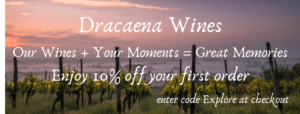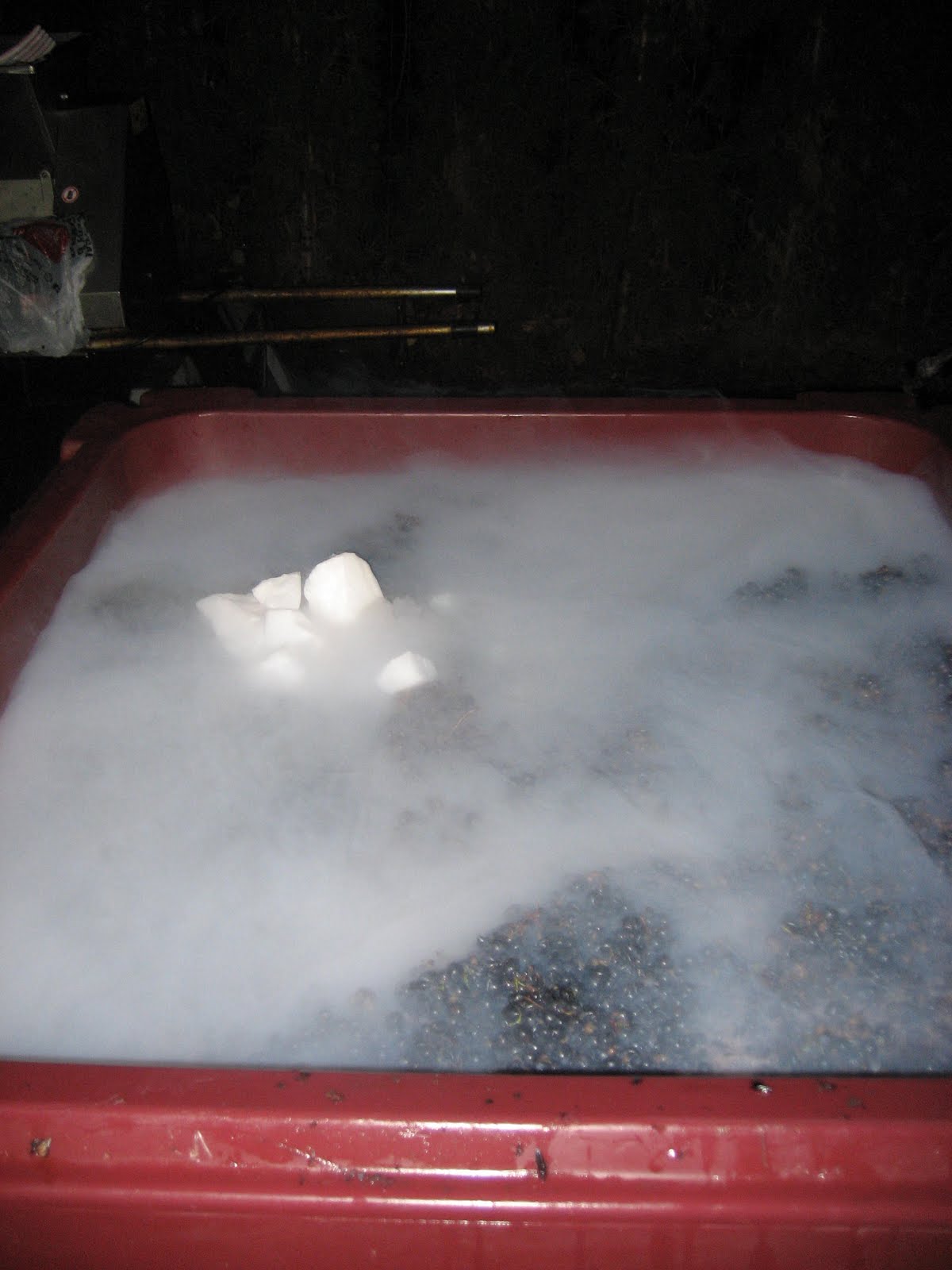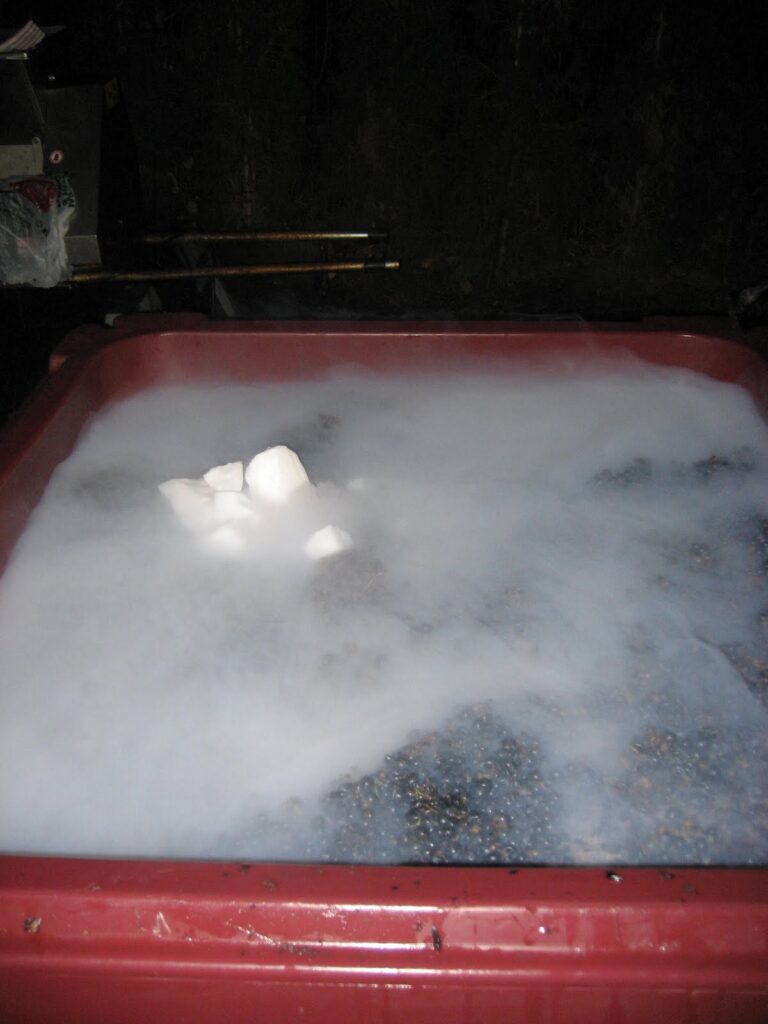One of the main concerns when harvesting is fermentation beginning prior to you wanting it to. We, as winemakers, want to be in control. This is why we pick in the morning, when the weather is cooler. We want the fruit to get to the winery before the heat of the day kicks in, and starts to help the fermentation get going. It makes for sleepless nights and heavy clothing, but it truly is best for the wine.
 Cold soak, also known as cold maceration, is performed on red wine varieties and is the process of preventing fermentation from occurring while allowing the juice to remain in contact with the skins. This helps to extract more aromas and flavors from the grapes, resulting in a higher quality wine. It is done at a very low temperature. This cold temperature prevents the yeast that are naturally on the grapes from starting to ferment the sugars inside the grapes. We would like to keep them at bay until we are ready to have fermentation begin. An important aspect of cold soaking is that, while it does extract the color and the flavors, it does not extract tannin. Tannin is brought into the picture during fermentation.
Cold soak, also known as cold maceration, is performed on red wine varieties and is the process of preventing fermentation from occurring while allowing the juice to remain in contact with the skins. This helps to extract more aromas and flavors from the grapes, resulting in a higher quality wine. It is done at a very low temperature. This cold temperature prevents the yeast that are naturally on the grapes from starting to ferment the sugars inside the grapes. We would like to keep them at bay until we are ready to have fermentation begin. An important aspect of cold soaking is that, while it does extract the color and the flavors, it does not extract tannin. Tannin is brought into the picture during fermentation.
When we cold soak, we place dry ice into the bin containing the destemmed fruit. For our Cab Franc, we do 20 pounds of dry ice for each ton of fruit. This is not a specific calculation, it is what we do. The dry ice drops the temperature to about 40oF. At this temperature, the yeast that are naturally occurring can not go through alcoholic fermentation, therefore the grapes remain in a state of suspension. We keep the fruit in a cold soak for 48-72 hours. During this time, the juice is able to extract more color from the grape skins along with more flavonoids and increases the texture of the wine, resulting in a fuller bodied wine.
While the fruit is undergoing cold soak, we cover the bin to contain the CO2 and cold and prevent oxygenation of the juice. Oxygen at this point will aid in fermentation, which we don’t want, and will begin to breakdown the color of the wine, which is a main reason we are doing cold soak.
Have you been missing the weekly Exploring the Wine Glass posts? They have moved. Sign up at http://eepurl.com/be49CD to never miss a post. Subscribe to Dracaena Wines’ blog in the sidebar.
After the time in cold soak, we then go through the remaining processing of the fruit. Since at this point, we use commercial yeast, we take a portion of the juice and add it to the yeast. This is known as creating the starter yeast. Once the yeast begins to froth, we know it is active. We add the starter to the juice and allow fermentation to occur until it is dry. (zero residual sugar). After fermentation, the wine will go through malolactic fermentation. We then press off the remainder of the juice and allow the wine to rest.
The concept of cold soak was Pioneered by Henri Jayer who was a French vintner who is credited with introducing important innovations to Burgundian winemaking. He was particularly known for the quality of his Pinot noir. Jayer was born in Vosne-Romanée. He attended the University of Dijon in the 1940s and earned a degree in oenology.

Slàinte!
Please follow us on Instagram, Twitter, Facebook and Youtube.
Have you been missing the weekly exploring the wine glass posts? They have moved. Sign up at http://eepurl.com/be49CD to never miss a post.
Try the 90+ rated and multiple Double Gold medal winning wines of Dracaena Wines and get a 10% discount off your first order. Click the banner below and use code “Explore” at checkout. 


